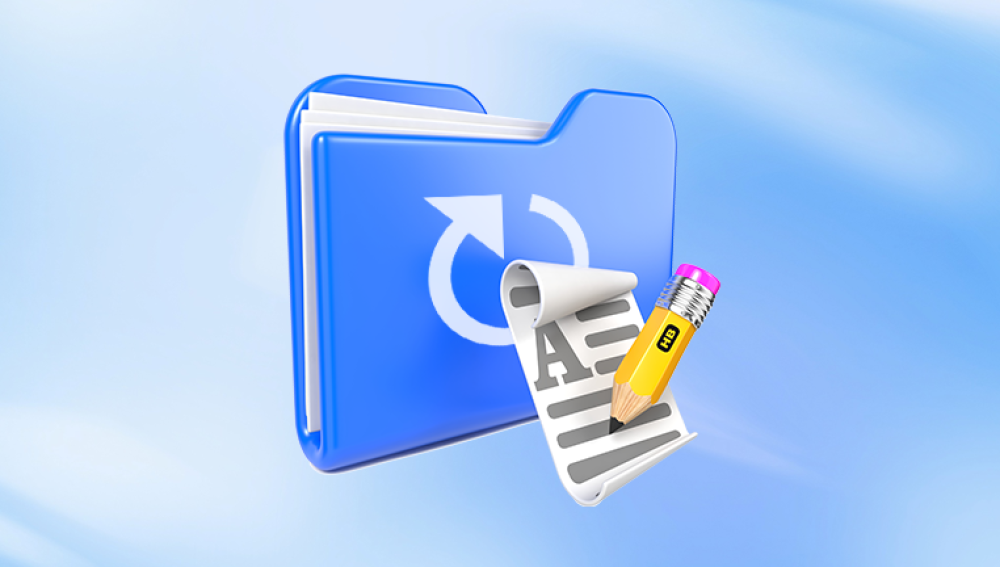Soft Deletion – Deleted files usually go to the Recycle Bin (Windows) or Trash (Mac) and can be restored easily.
Permanent Deletion – When files are deleted with shift+delete (Windows) or cmd+option+delete (Mac), they bypass the Recycle Bin. The file system marks the space as available, but the data remains until overwritten.
File System Behavior – Storage devices use file systems like NTFS, FAT32. exFAT, HFS+, and APFS. Recovery programs scan the disk to locate and reconstruct deleted files.
The key takeaway is that the sooner you attempt recovery, the higher the chance of success. Continued use of the storage drive increases the risk of overwriting the deleted data.

When to Use Recovery Programs
Programs are useful in various scenarios:
Accidental deletion of files or folders
Emptying the Recycle Bin without realizing important files were inside
Formatted drives or storage media
Corrupted files or storage devices
System crashes that result in missing data
Recovery programs are not only for emergency situations—they can also help recover files lost due to malware, software glitches, or failed updates.
Types of File Recovery Programs
Free Tools – These are suitable for basic recovery tasks, usually supporting common file types and standard storage devices. Examples include Recuva and PhotoRec.
Professional Tools – Paid programs like Drecov Data Recovery, EaseUS Data Recovery Wizard, and Disk Drill offer advanced scanning, file preview, support for multiple file systems, and recovery from formatted or corrupted drives.
Enterprise Solutions – Designed for business environments, these include RAID recovery, network recovery, and integration with cloud storage systems.
Popular Programs to Restore Deleted Files
1. Drecov Data Recovery
Overview: Drecov Data Recovery is an intuitive tool designed to recover files from local drives, USB drives, SD cards, and other storage media.
Key Features:
Quick and deep scanning modes
Supports documents, photos, videos, and system files
Preview files before recovery
Recovery from formatted drives
How to Use Drecov Data Recovery:
Install the software on a drive different from the one containing deleted files.
Launch the program and select the affected drive.
Choose Quick Scan or Deep Scan.
Preview recoverable files.
Restore files to a different location to avoid overwriting.
Drecov Data Recovery is ideal for both beginners and advanced users because of its simplicity and reliability.
2. Recuva
Overview: Recuva is a free Windows program that is effective for basic file recovery.
Key Features:
Simple interface
Quick and deep scan modes
Supports FAT and NTFS file systems
Steps to Recover Files with Recuva:
Install Recuva on a separate drive.
Select the drive or folder to scan.
Choose file types (optional) and start the scan.
Preview found files and recover to a safe location.
Recuva is ideal for small-scale recovery tasks and casual users.
3. EaseUS Data Recovery Wizard
Overview: EaseUS is a professional-grade recovery tool that supports Windows and Mac, suitable for recovering deleted, formatted, or corrupted files.
Key Features:
Recover from hard drives, USB drives, SD cards, and external drives
Preview files before recovery
Filter files by type
Supports multiple file systems
How to Use:
Install on a separate drive.
Select the location where files were deleted.
Run a scan and preview recoverable files.
Recover files to a safe location.
EaseUS is recommended for users with larger-scale recovery needs or complex data loss situations.
4. Disk Drill
Overview: Disk Drill is available for Windows and Mac, offering advanced scanning and partition recovery.
Key Features:
Quick and deep scan
Supports over 400 file types
Recovery from external drives, SD cards, and internal drives
Partition recovery and data protection
Steps to Use Disk Drill:
Install on a separate drive.
Select the affected drive.
Scan for lost data.
Preview and restore files to a safe location.
Disk Drill is particularly effective for recovering large volumes of files or from complex storage setups.
5. PhotoRec
Overview: PhotoRec is a free, open-source tool for Windows, Mac, and Linux, focused on multimedia recovery.
Key Features:
Supports hundreds of file formats
Works on corrupted or formatted drives
Can recover files from SD cards, USB drives, and internal drives
How to Use PhotoRec:
Download and extract the software.
Select the storage device.
Choose partition type and filesystem.
Select file types to recover.
Choose a recovery destination and start the scan.
PhotoRec is ideal for tech-savvy users or when free recovery is preferred.
Steps for Successful File Recovery
Stop Using the Affected Drive – Prevent overwriting deleted files.
Install Recovery Software on a Separate Drive – Avoid overwriting the lost data.
Select the Target Drive or Folder – Ensure the correct location is scanned.
Run a Scan – Quick scan first, then deep scan if necessary.
Preview Files – Verify integrity before recovery.
Recover to a Safe Location – Never restore files to the original location immediately.
Backup – Once files are recovered, create backups to avoid future loss.
Special Recovery Scenarios
Recovering Files from External Drives or SD Cards
Use professional software to scan external storage.
Avoid using the device until recovery is complete.
Recovering Formatted Drives
Deep scan is crucial for formatted drives.
Some programs reconstruct the file system to recover data.
Recovering System or Hidden Files
Use advanced programs like Drecov Data Recovery or Disk Drill.
Ensure system files are enabled for scanning.
Troubleshooting Recovery Issues
Files Not Found: Run a deep scan or try another recovery program.
Corrupted Files: Preview files and use software with repair capabilities.
Overwritten Files: Recovery may be impossible; preventive measures are key.
Device Not Recognized: Check card readers, USB ports, or use disk management tools.
Preventive Measures
Regular Backups – Use external drives or cloud storage.
Enable File History or Backup Tools – Protect against accidental deletions.
Avoid Writing New Data on Affected Drives – Prevent overwriting recoverable files.
Use High-Quality Storage Devices – Reduce failure risks.
Educate Users – Prevent accidental deletion in multi-user environments.
The best programs to restore deleted files combine advanced scanning, user-friendly interfaces, and compatibility with multiple storage devices. Free tools like Recuva and PhotoRec are effective for basic recovery, while professional software like Drecov Data Recovery, EaseUS Data Recovery Wizard, and Disk Drill provide more powerful and comprehensive solutions.
Successful recovery depends on acting quickly, selecting the appropriate program, scanning thoroughly, and restoring files to safe locations. Preventive measures such as backups, file history, and careful drive management further protect data. With the right tools and practices, accidental deletion does not have to result in permanent data loss.




